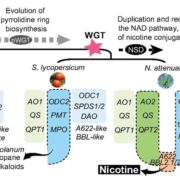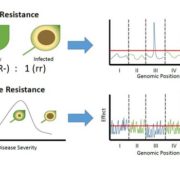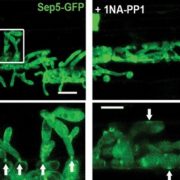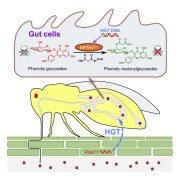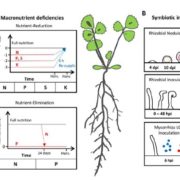Review: Root cell types as an interface for biotic interactions (TIPS)
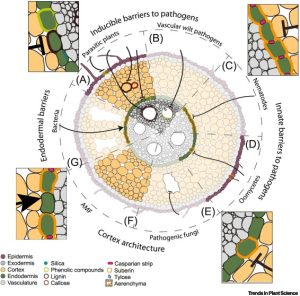 Kawa and Brady review the contributions and responses of individual cell types and cell identities in plant biotic interactions, both pathogenic and commensal. The first step in these interactions is the perception of the microbes by root cells, which involves highly conserved microbe-associated molecular patterns (MAMPs) such as flagellin. MAMPs can trigger plant defense responses, which can sometimes be suppressed or evaded by microbial processes. Transcriptional responses to MAMPs are cell-type specific (stronger in epidermal cells). Many microbes move into deeper root tissues (e.g., vasculature), but this progress can be halted or hindered by barriers including the Casparian strip. Roots can respond to pathogens by increasing the production of anti-microbial metabolites or compounds that contribute to barrier formation. Interestingly, some microbes can facilitate their entry by reprograming plant cells. Root radial anatomy is diverse in terms of numbers and types of cell layers, and these factors also affect microbial interactions. This deep and detailed dive into the very localized responses of roots to beneficial and harmful microbes raises many interesting opportunities for engineering plants to be more welcoming to helpful microbes while maintaining or strengthening their barriers to those that cause harm. (Summary by Mary Williams @PlantTeaching) Trends Plant Sci. 10.1016/j.tplants.2022.06.003
Kawa and Brady review the contributions and responses of individual cell types and cell identities in plant biotic interactions, both pathogenic and commensal. The first step in these interactions is the perception of the microbes by root cells, which involves highly conserved microbe-associated molecular patterns (MAMPs) such as flagellin. MAMPs can trigger plant defense responses, which can sometimes be suppressed or evaded by microbial processes. Transcriptional responses to MAMPs are cell-type specific (stronger in epidermal cells). Many microbes move into deeper root tissues (e.g., vasculature), but this progress can be halted or hindered by barriers including the Casparian strip. Roots can respond to pathogens by increasing the production of anti-microbial metabolites or compounds that contribute to barrier formation. Interestingly, some microbes can facilitate their entry by reprograming plant cells. Root radial anatomy is diverse in terms of numbers and types of cell layers, and these factors also affect microbial interactions. This deep and detailed dive into the very localized responses of roots to beneficial and harmful microbes raises many interesting opportunities for engineering plants to be more welcoming to helpful microbes while maintaining or strengthening their barriers to those that cause harm. (Summary by Mary Williams @PlantTeaching) Trends Plant Sci. 10.1016/j.tplants.2022.06.003


